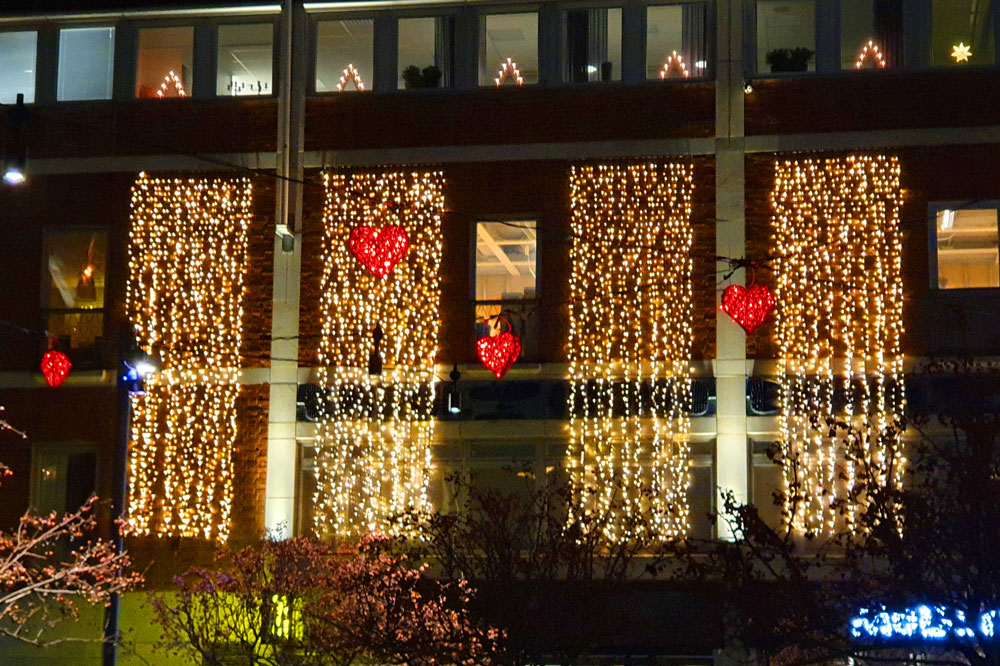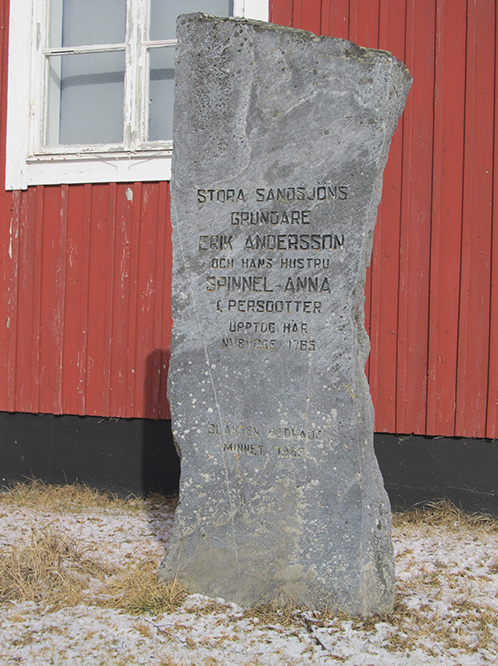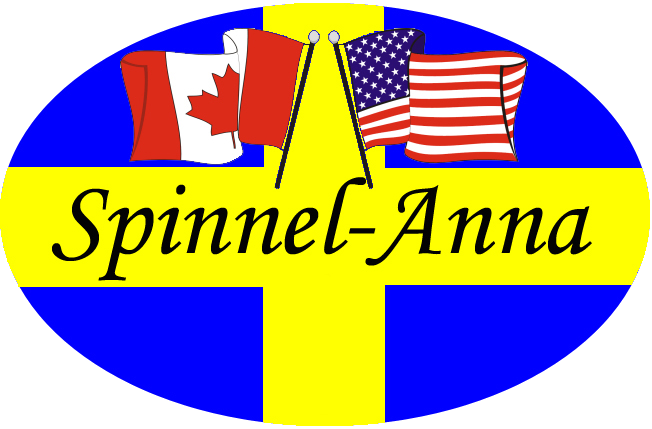
In English
Here you find the history of Spinnel-Anna. You also have links to different pages on this web-site.
The picture shows four hanging red hearts at Rådhustorget in Umeå.
Change information
Become a member
Reunion
Gallery

Spinnel-Anna – a strong woman from Storsandsjö
Spinnel-Anna is described as the resourceful and courageous settler´s wife, who in fierce competition managed to get legal title on a new settlement at Stora Sandsjön. She thus became the founder of the village of Storsandsjö. It is with warm pride that we tell you about our relationship with Spinnel-Anna.
Anna Pehrsdotter Spinnel was a very special and strong woman. Her fight to win title to her and her husband´s new settlement at Stora Sandsjön is well known and has made Spinnel-Anna a part of Västerbotten County’s history. The name Spinnel-Anna comes from her father´s soldier name.
The soldier Per Spinnel and his wife Margaretha had a daughter Anna (Spinnel-Anna) on August 10, in the year 1724. The family then lived in Västerhiske, a short distance outside Umeå. From there, the whole family moved to Tavelsjö when Anna was 3 years old. In 1755, she married the farmer Erik Andersson and moved with him to the village of Hjuken in Degerfors parish (Vindeln today). They lived in Hjuken for about 10 years before moving to their new home at Stora Sandsjön, about 18 kilometers north of Vindeln.
The new settlement at Stora Sandsjön
The story tells that Anna, and her husband were looking for a new place to build a new house and they found it near Stora Sandsjön. In 1764, they applied to the governor of Västerbotten County for a new settlement. Several other of Hjuken´s farmers were also interested in this area. On man in particular, the local innkeeper “Gam-Hjuk”, was a dangerous competitor.
When Spinnel-Anna heard that Gam-Hjuk had left for the governor in Umeå, she left herself to try to catch up before him. The distance between Hjuken and Umeå is 72 kilometers. Despite being far along in her pregnancy, she skied most of the distance. When she got to Hissjö, 20 kilometers outside Umeå, she heard that Gam-Hjuk was there. She managed to persuade a farmer to help her. The farmer arranged so that Gam-Hjuk was invited to a wedding that was to be held on that day.
Gam-Hjuk was known to like strong drinks and he stayed the night. In the meantime, the farmer drove Spinnel-Anna the last bit to Umeå. She was the first to arrive when the governor opened the gates the following day. When Gam-Hjuk came into town, Spinnel-Anna came out with the deed in her hand. She waved proudly and said: “Now I´ve molded, now you get to bake.” This took place in the autumn of 1765. Her son Olaus was born on December 12 of the same year.
A judgement book from 1753 mentions a dispute between Spinnel-Anna and her neighbor Daniel Köniksson. Anna blamed the neighbor´s sister for killing a goat and tied the feet of Anna´s goats together. In court, it emerged that Anna also accused Daniel Köniksson´s wife of “having incited her husband and peasants to be evil against her”. In addition, they argued about a bottle of brandy that Daniel had lost. The trial ended with Anna being fined 4.16 daler silver coins for “untimely statements”.
Anna´s parents Margaretha and Per
Anna´s father, Per Olofsson Spinnel, was born in 1693. He grew up as the eldest of five siblings in Håkmark, just outside Umeå, where his father settled in 1701. Per was a soldier and was wounded in battle in 1718. He continued as a soldier until 1727, when he became a farmer together with his wife and family in Tavelsjö. Per was something of a troublemaker. He was tried several times for bad conduct. Among other things, once for abusing alcohol and another time for swearing at people who came and went from church and for hitting animals and people. Per died in 1757 and his diagnosis was “chest pains” and no breathing.
Anna´s mother, Margaretha Erichsdotter was born in 1693 and was the daughter of the farmer and soldier Erich Erichson Hjulman from Tavelsjö. Margaretha was also a colorful woman who ended up in trouble with justice. Once for being “dressed above her class”, with lace and ribbons in her hat. The result was that she had to spend eight days in prison on bread and water. She had also been dressed in “whore clothing” in church at Easter. Margaretha died on May 6, 1774, of the infirmities of old age after being bedridden for two years.
Spinnel-Anna was the second oldest child among nine siblings of Margaretha and Per. Spinnel-Anna and her husband Eric are assumed to have moved to the new settlement immediately when they received the deed. Anna and Eric had eleven children, but five of them died before they were 5 years old. Spinnel-Anna died in 1812. When eldest son Anders Ersson grew up, he became very strong, so the villagers called him “The bear from Stora Sandsjön”.
The memorial stone
This stone was was erected in memory of Stora Sandsjön´s founder Erik Andersson and his wife Anna Phersdotter Spinnel. They founded a settlement here in 1765.
The family honored their memory in 1965
The stone was picked up from Ida and Enar Vesterberg´s homestead. The memorial stone was originally placed in the courtyard where Spinnel-Anna settled in her new home. The stone was moved in 1995 to the meetinghouse of the village in Storsandsjö to be available to alla relatives.
The direct translation of the villagename Storsandjö is “Great Sandlake”.

Contact us
We are on Facebook.
